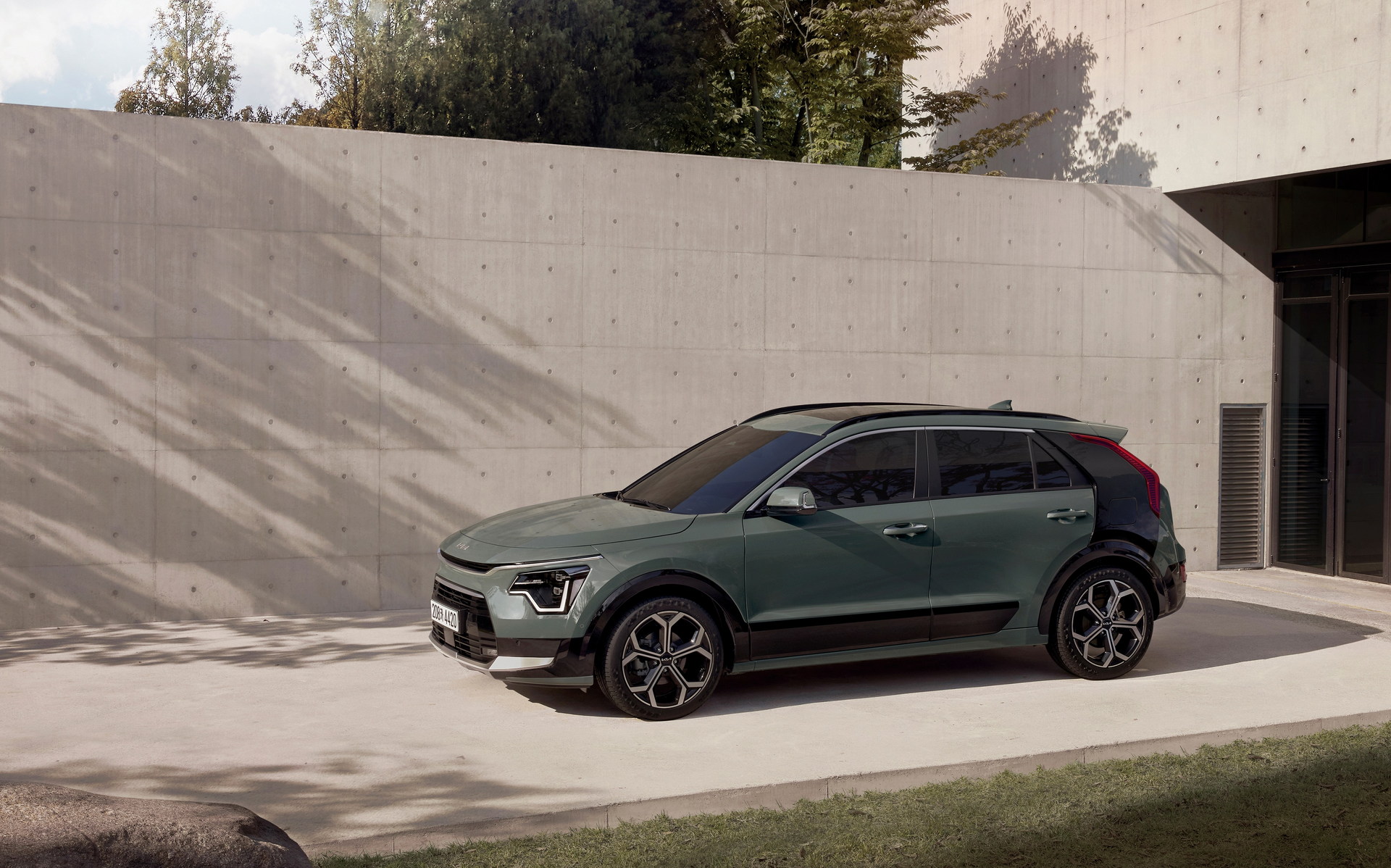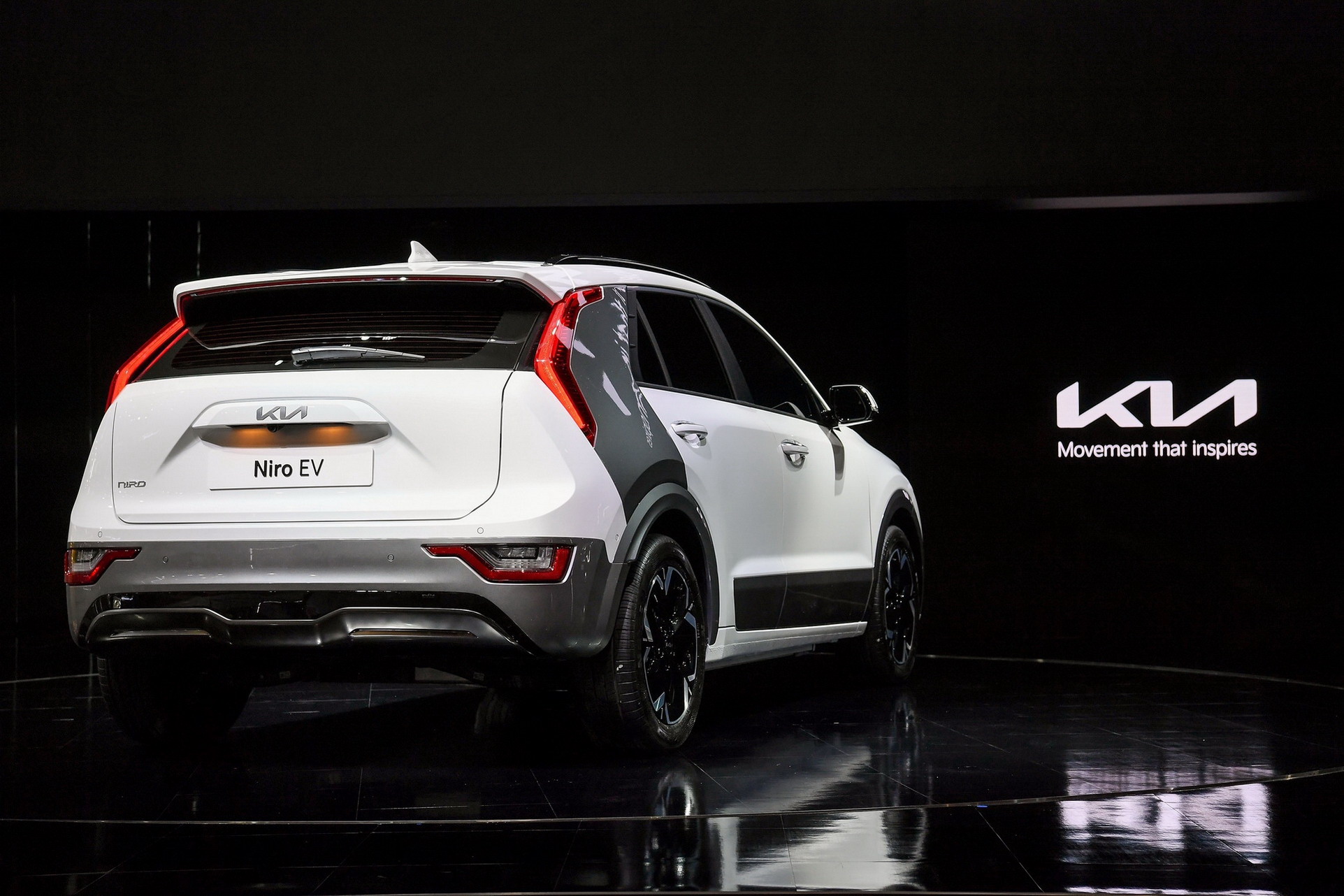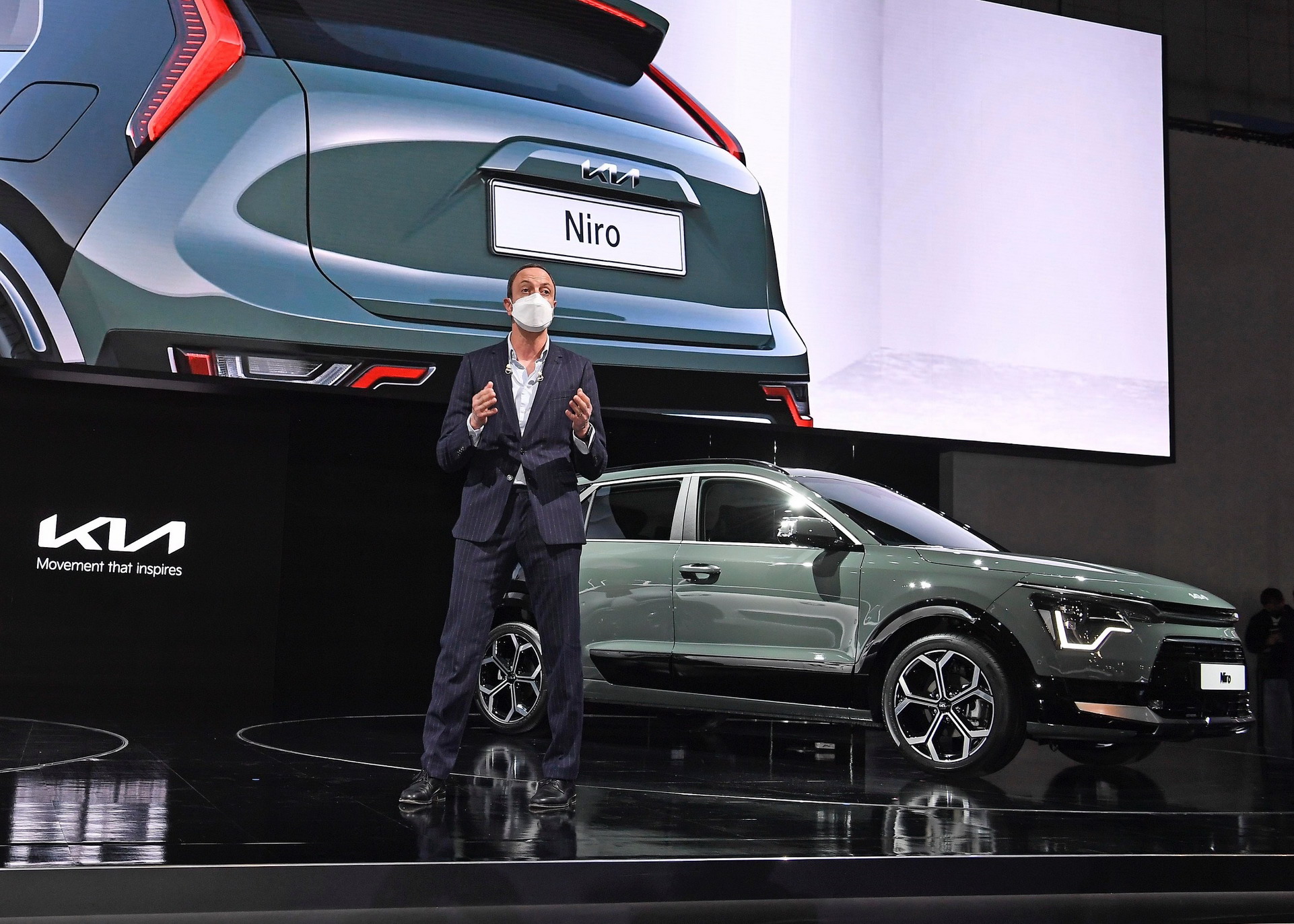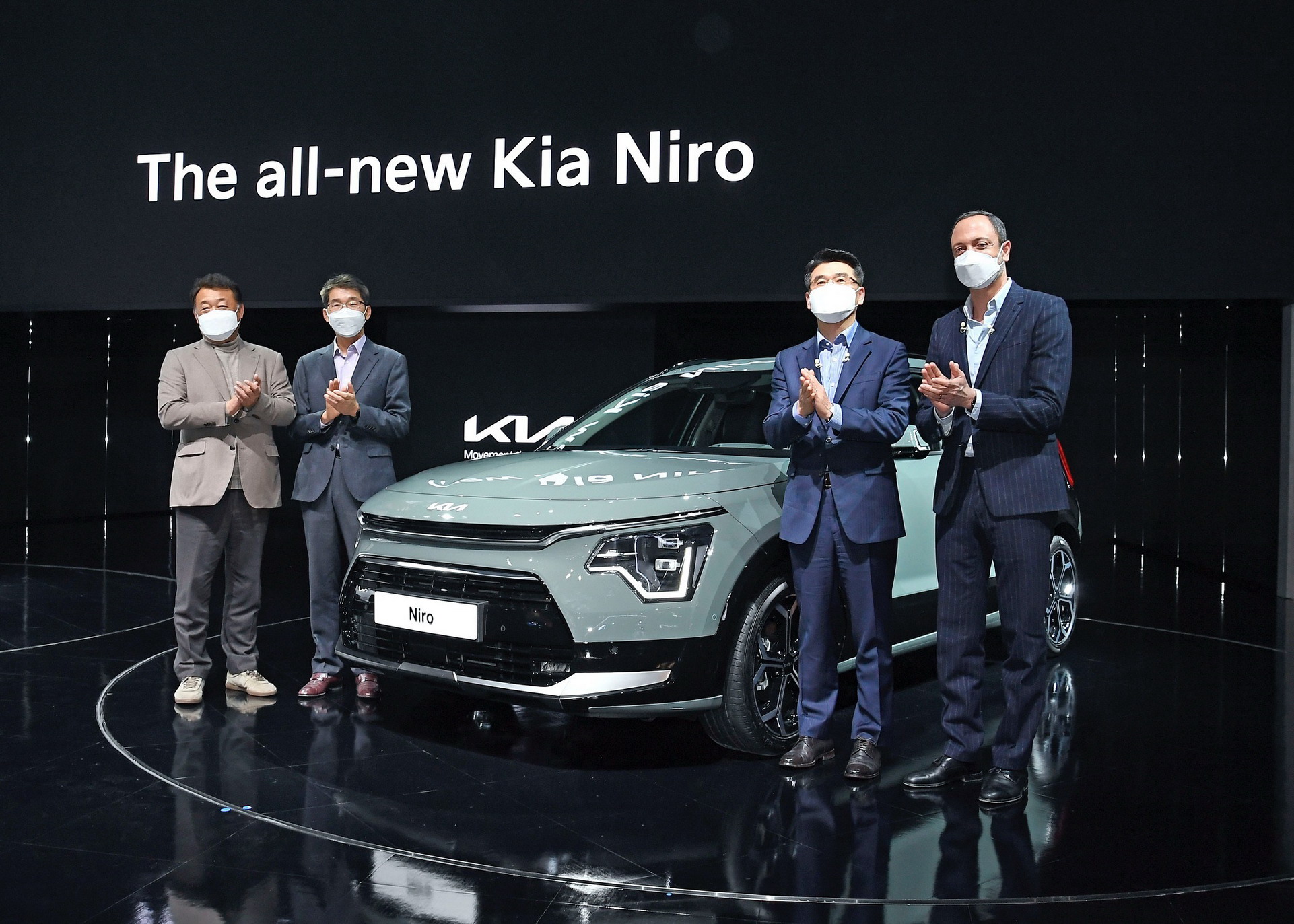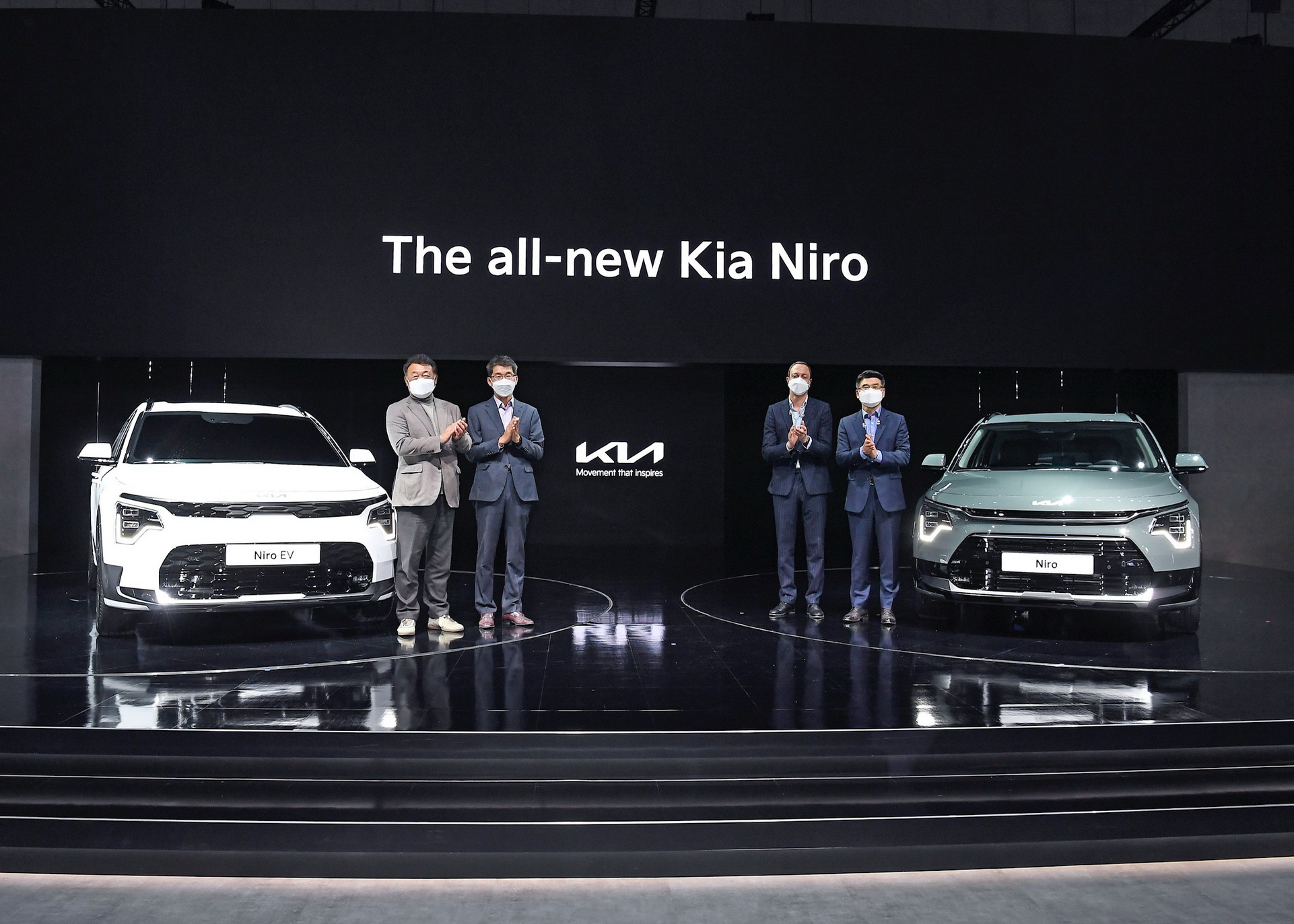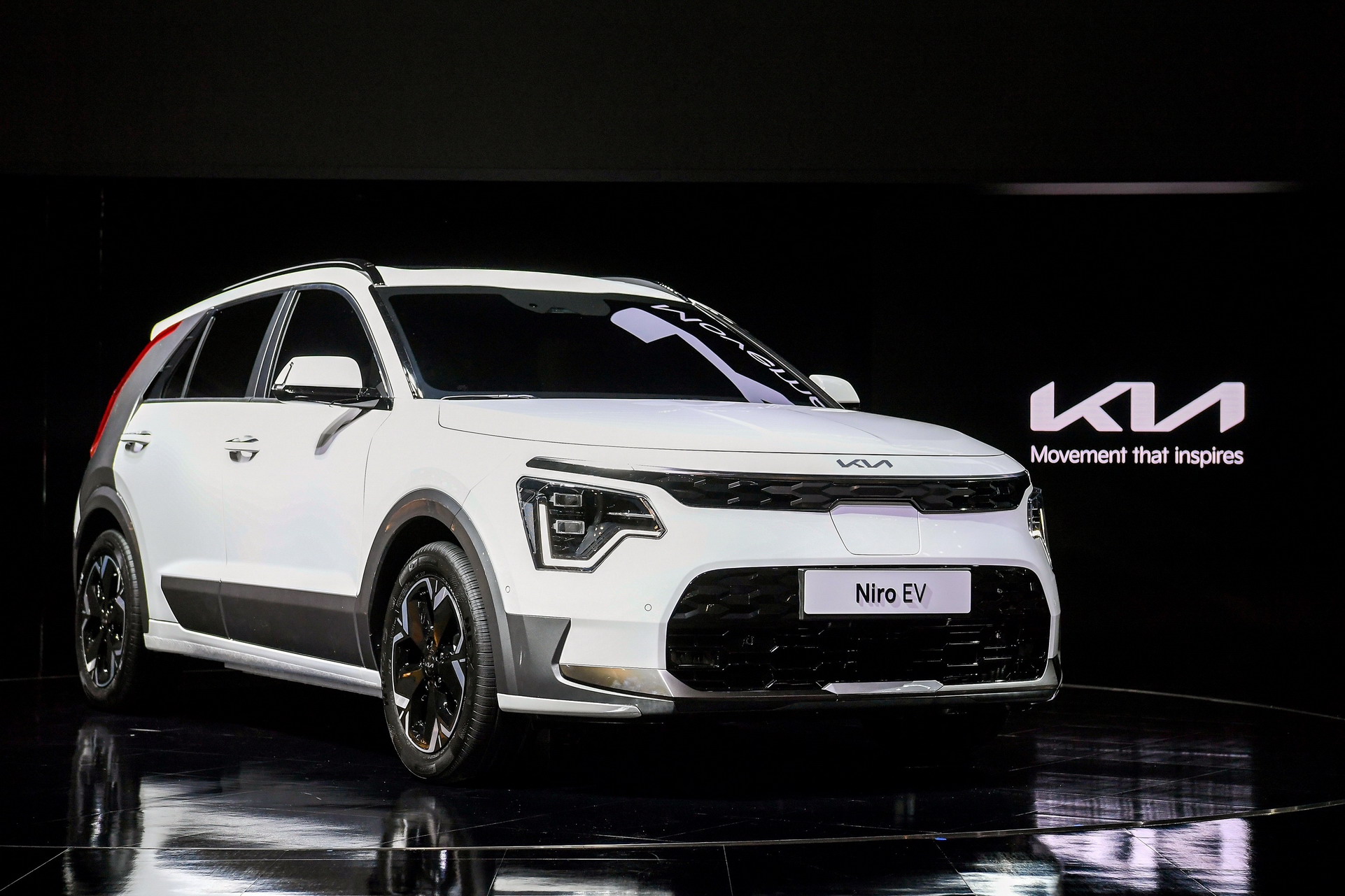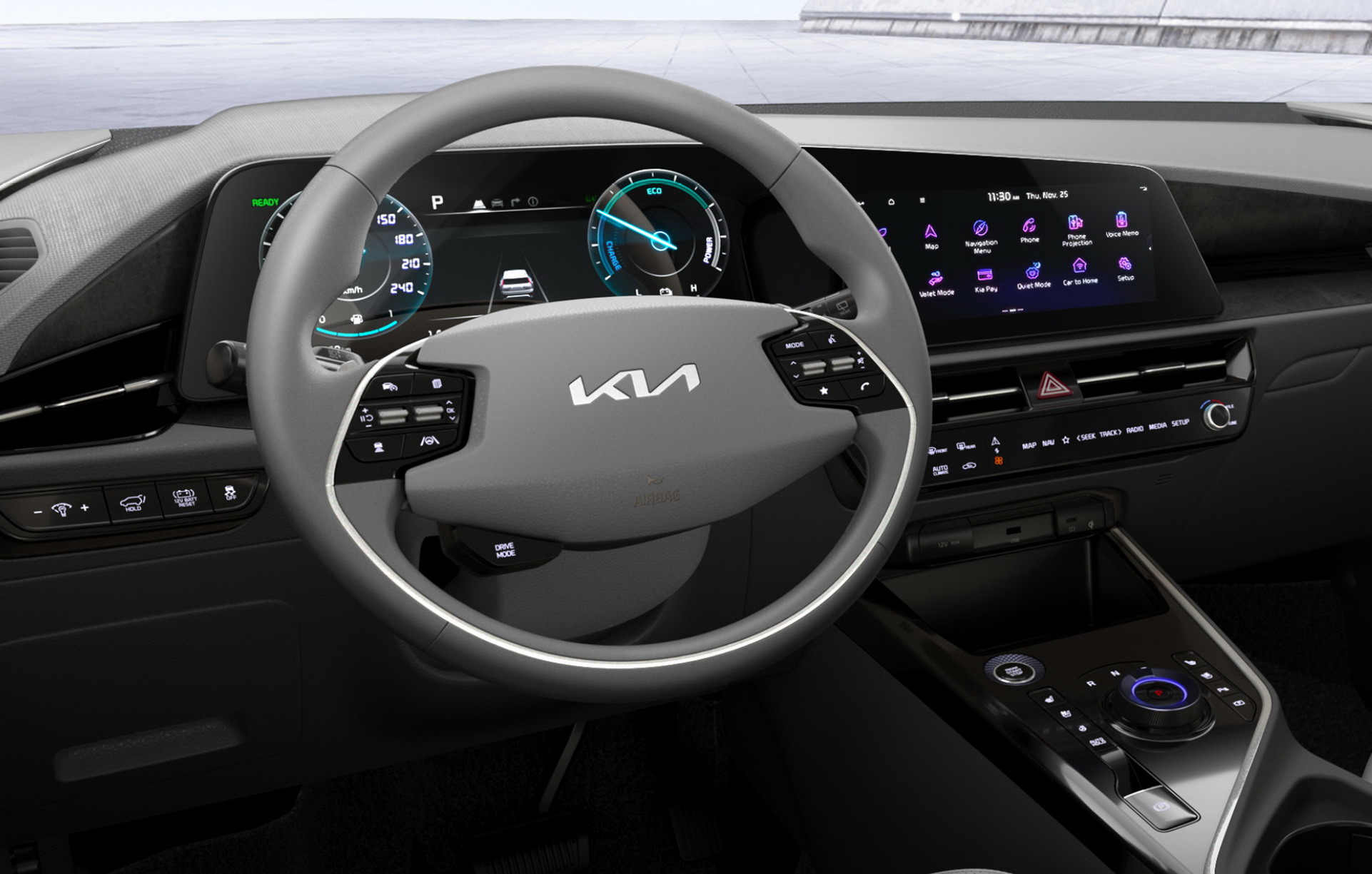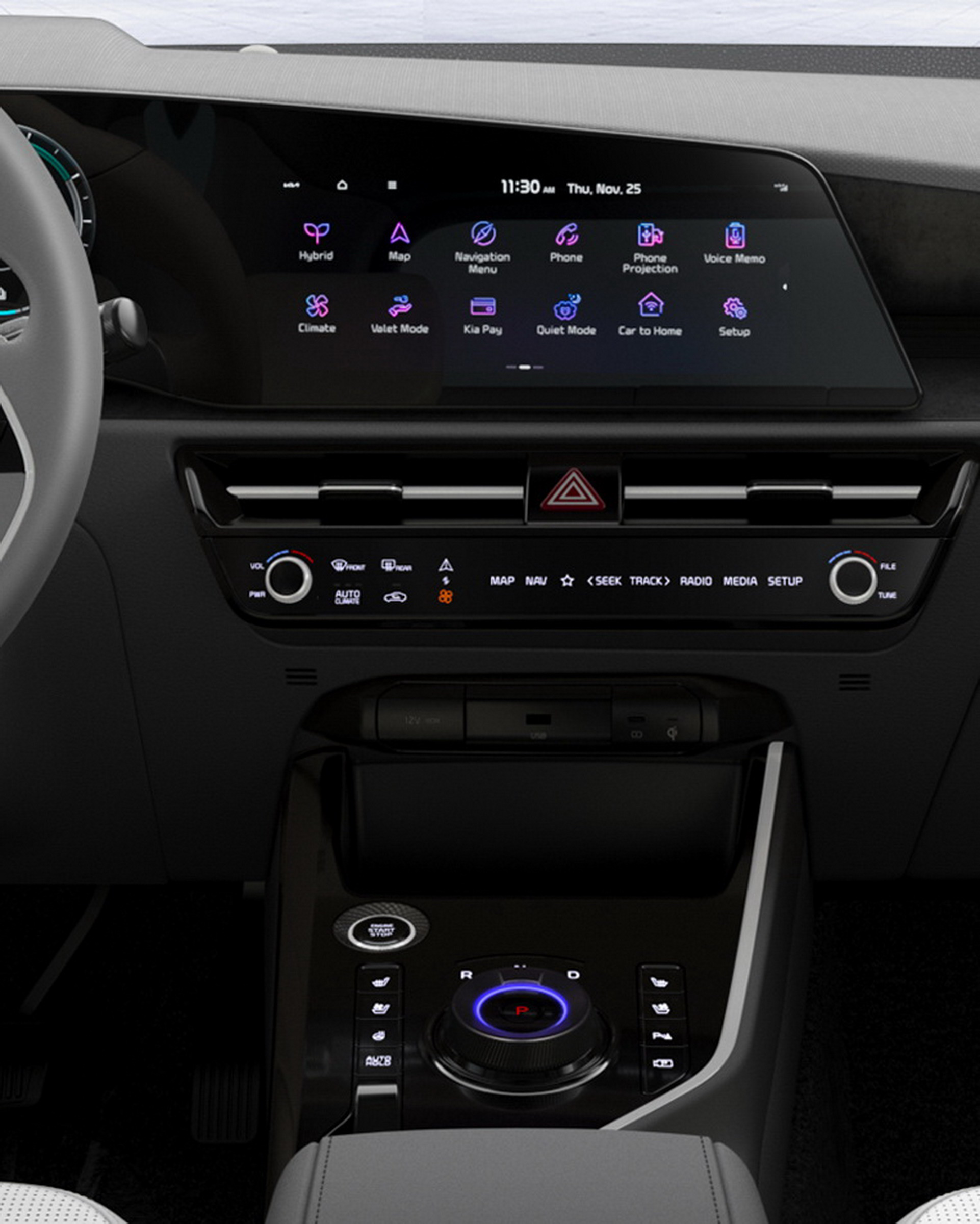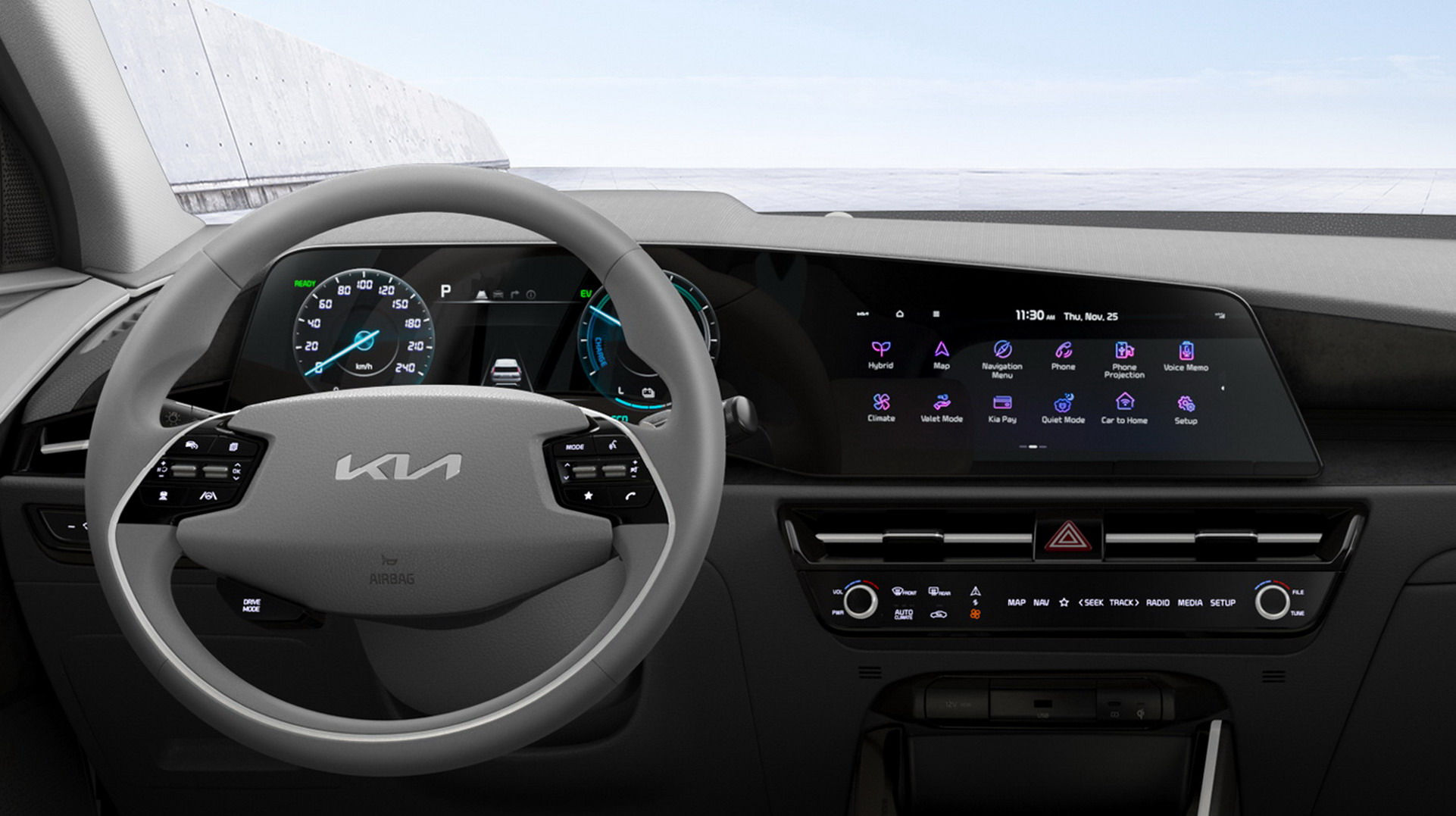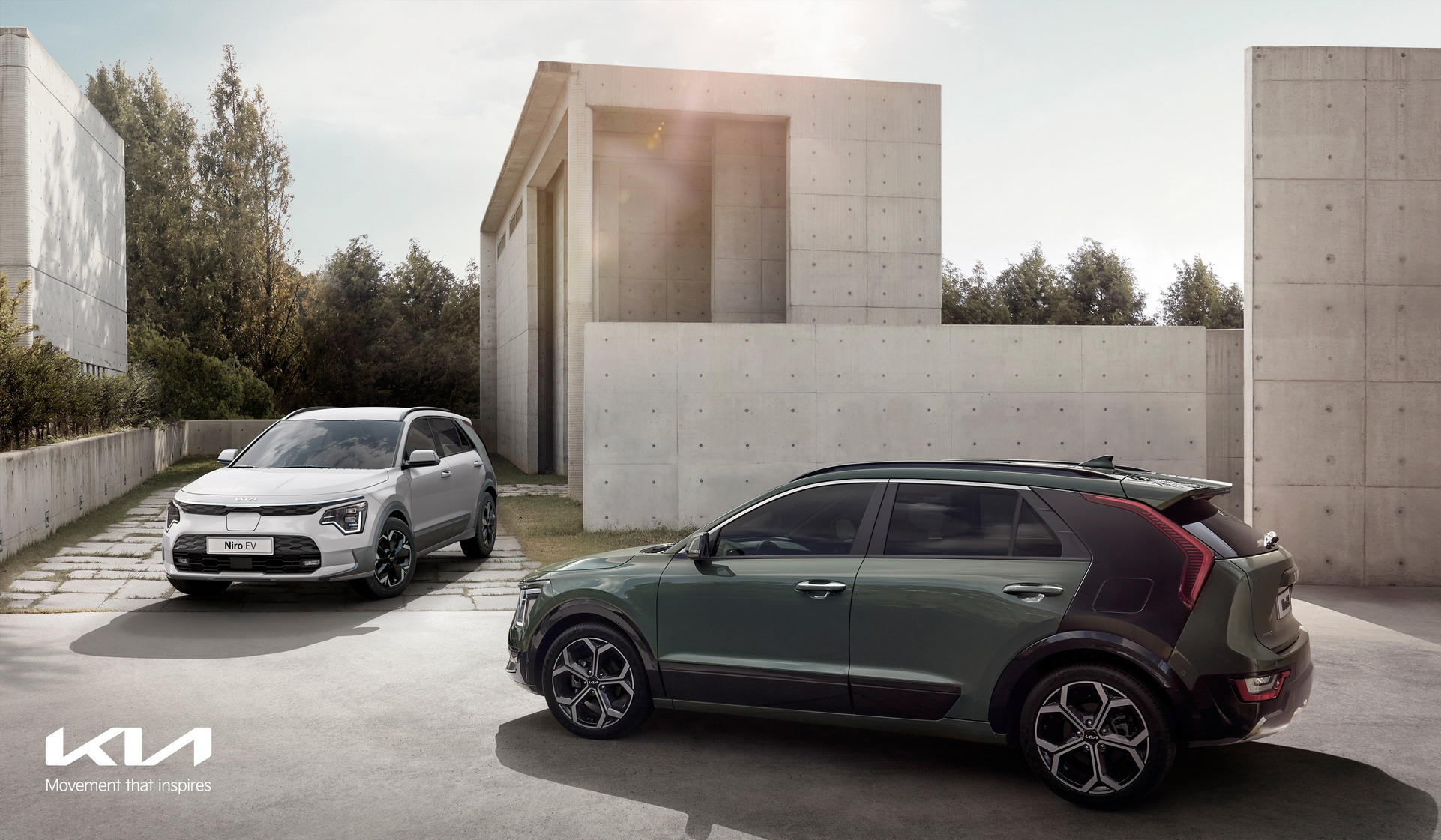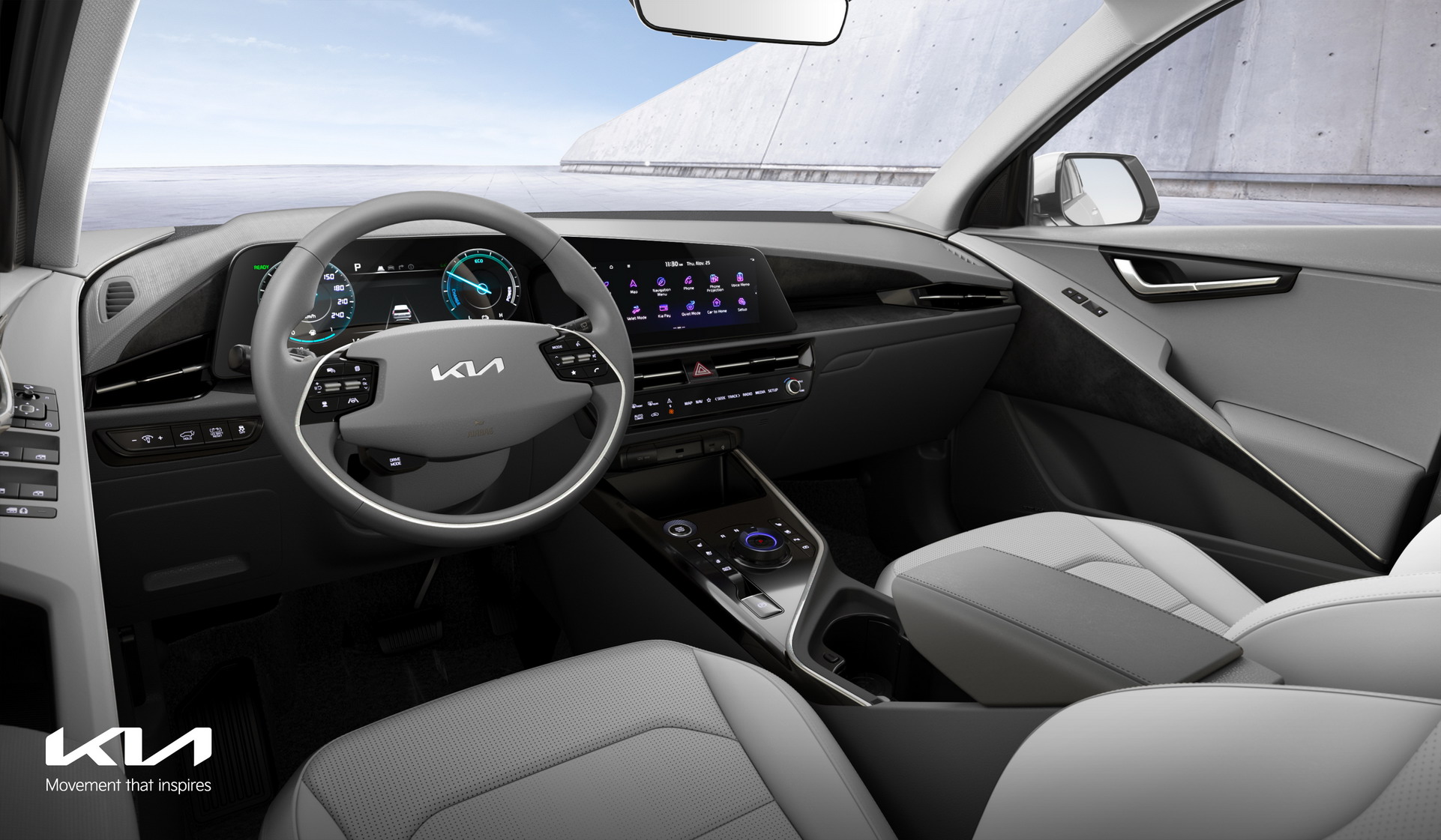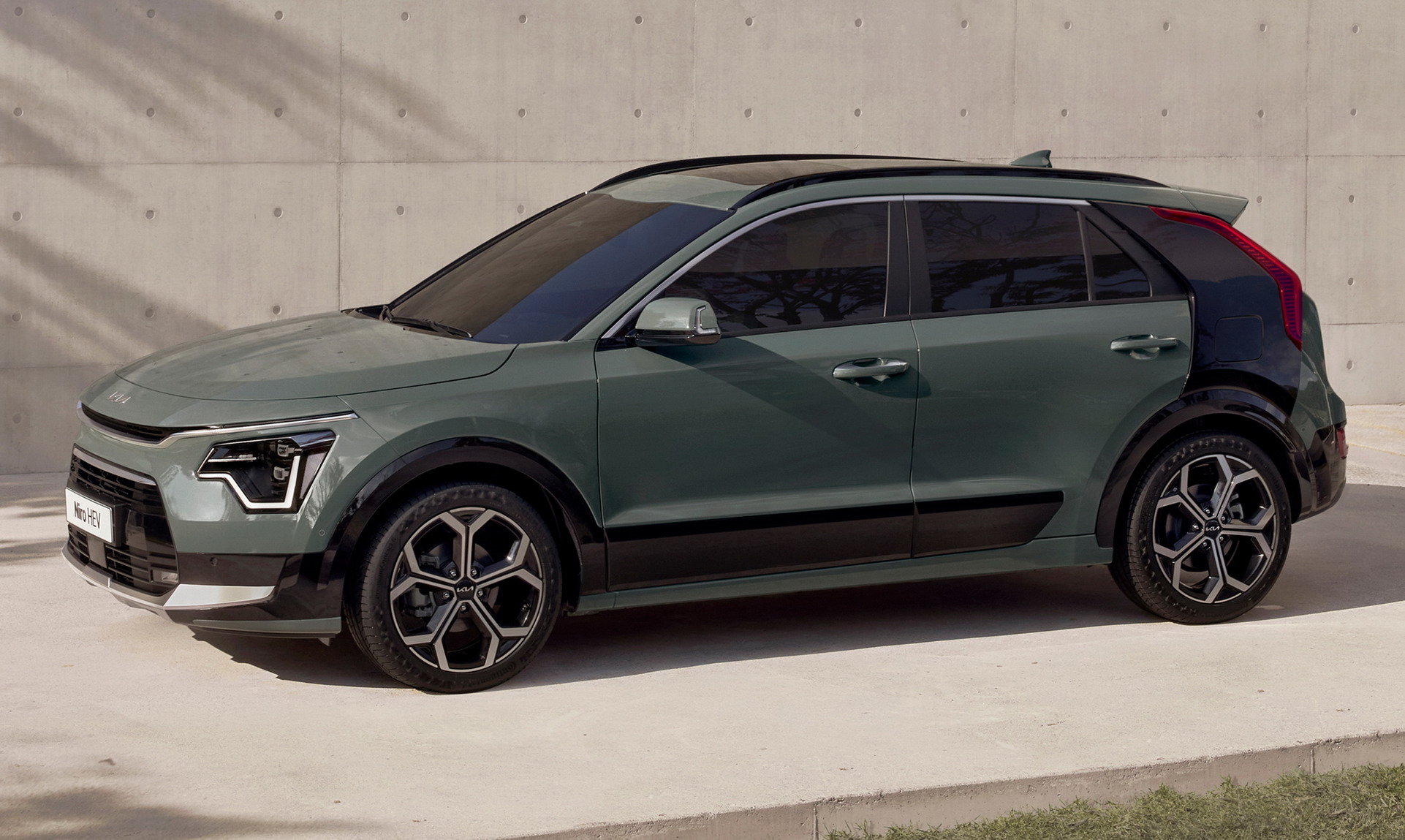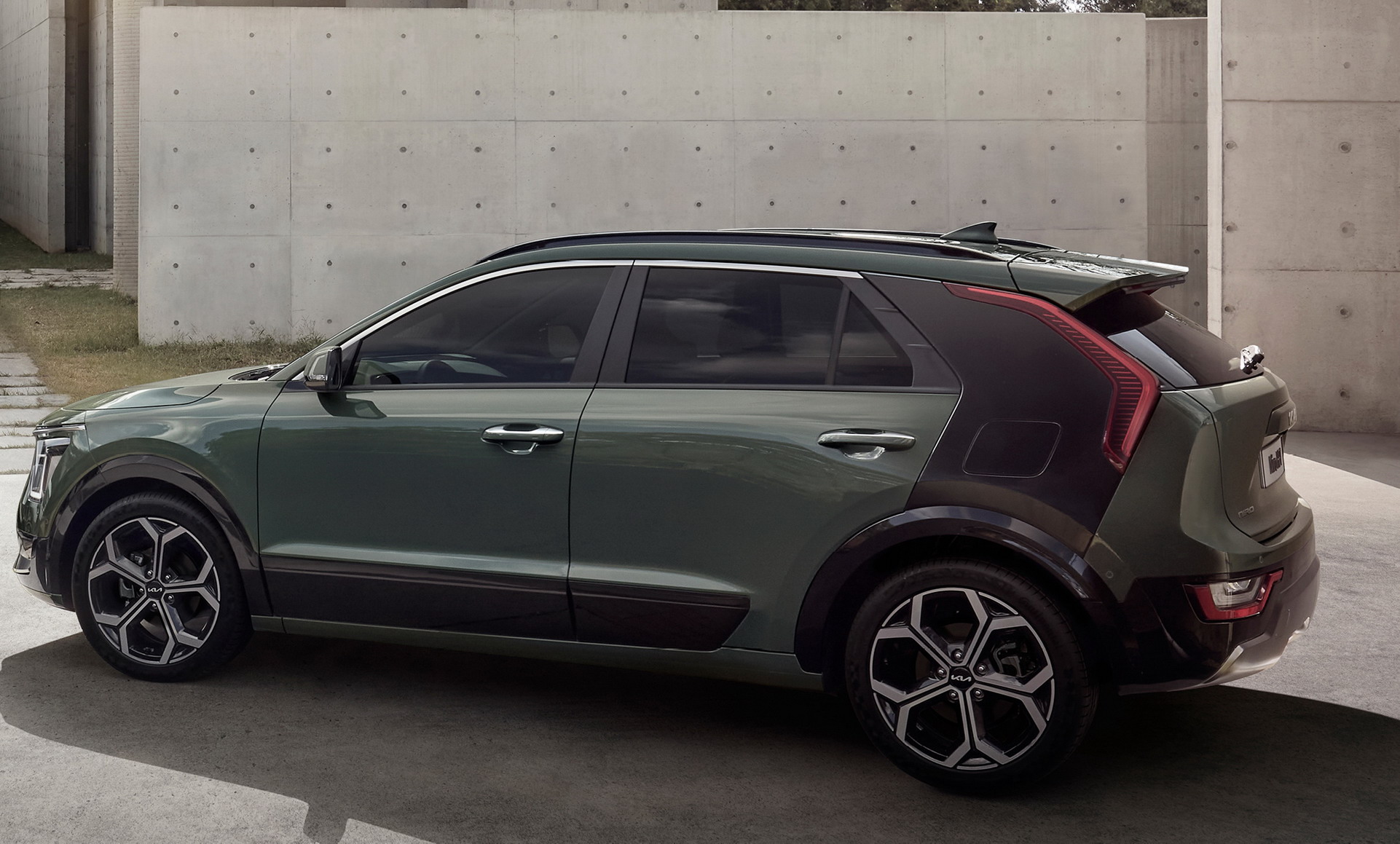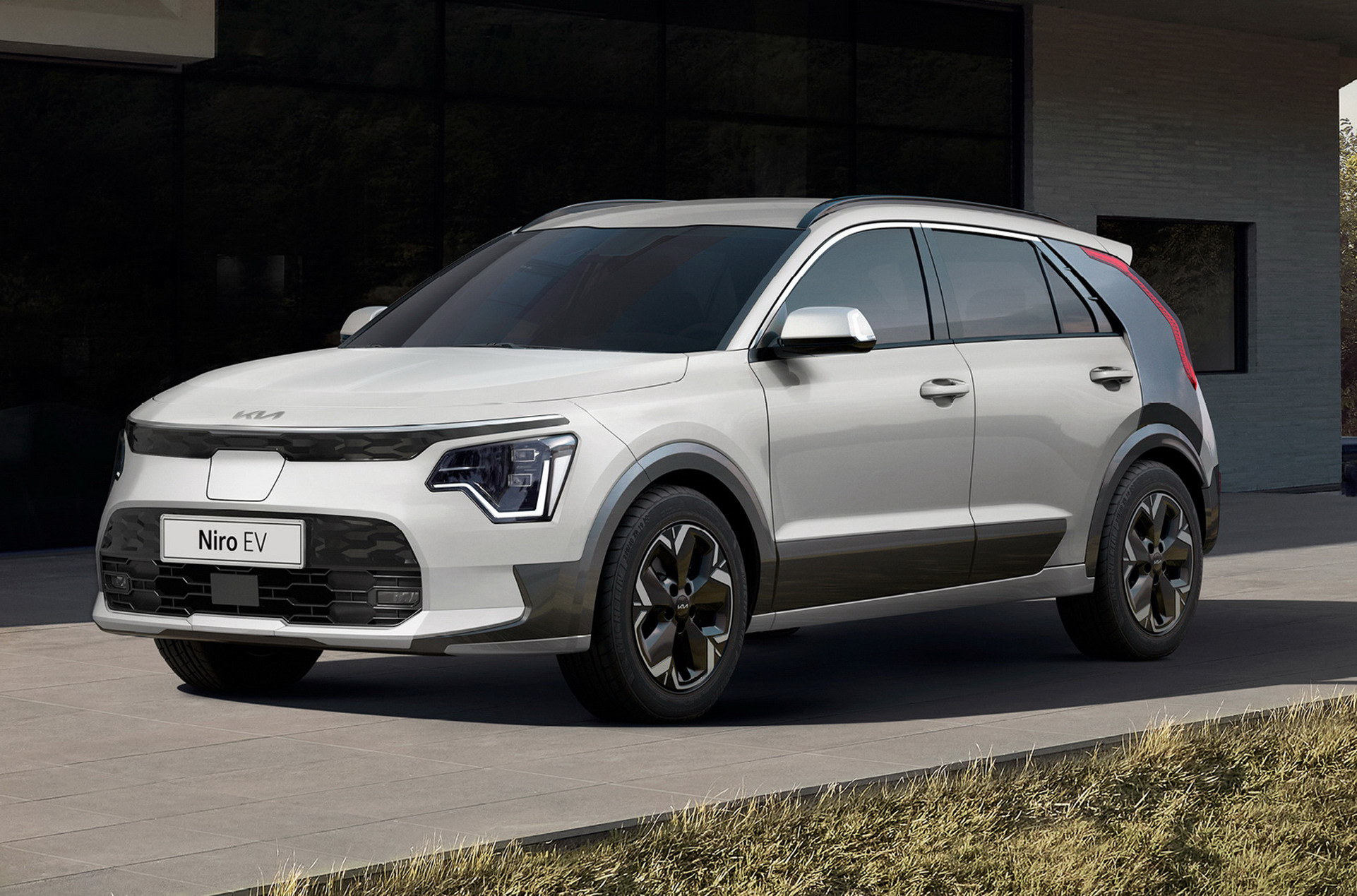The second-generation Kia Niro was officially unveiled at Seoul Motor Show in November, but the automaker didn’t include the detailed specifications of the three available hybrid-electric (HEV), plug-in hybrid (PHEV) and pure-electric powertrains. Today, Kia issued a new press release giving us the details on the hybrid model, together with information about the safety equipment and the exterior measurements.
Kia says that the Niro is based on the “third-generation platform” which is likely a heavily updated version of its outgoing model’s architecture since the new E-GMP is reserved for EV-only models. Kia engineers have optimized the steering and the suspension, with McPherson struts at the front and a four-link setup at the rear benefiting from a new setup.
The self-charging hybrid powertrain in the new Kia Niro HEV consists of an updated Smartstream 1.6-litre GDI four-cylinder engine producing 103 hp (77kW / 105 PS) and 144 Nm (106.2 lb-ft) of torque, plus a permanent magnet synchronous electric motor which is good for an extra 43 hp (32 kW / 44 PS). The combined output is 139 hp (104 kW / 141 PS), which is identical to the previous generation. Power is transmitted to the front axle through a six-speed DCT dual-clutch automatic.
Read Also: 2023 Kia Sportage Detailed For America With New Rugged-Looking X Models, A Hybrid Is On The Way
The new Niro has grown, measuring 4,420 mm (174 inches) long, 1,825 mm (71.85 inches) wide, and 1,545 mm (60.82 inches) tall, with a wheelbase of 2,720 mm (107 inches). This represents an increase of 65 mm (2.5 inches) in length, 20 mm (0.78 inches) in width, 10 mm (0.39 inches) in height, and an extra 20 mm (0.78 inches) for the wheelbase over the outgoing model, resulting in a more spacious cabin.
The model is offering a “Green Zone Drive” zero-emission mode that can be activated in specific places like residential areas, schools, or hospitals. Kia doesn’t mention the EV range but we guess it will be limited since the high-voltage battery located under the rear seats together with the 12V battery is rather compact. Being a self-charging hybrid means that the battery can only charge through regenerative braking or the internal combustion engine. According to Kia, the HEV powertrain is capable of achieving 4.81 lt/100 km (48.9 mpg) under the Korean fuel economy standards.
Read Also: Kia Design Boss Says The EV6 GT Carries “The Spirit Of Stinger”
We have already covered the quirkiness of the HabaNiro-inspired design, so let’s move on to the technology. Despite the larger dimensions, the drag coefficiency remains steady at 0.29 cd. The cabin is also more spacious with a 451 lt (15.9 cubic feet) boot that has been increased by 15 lt (0.5 cubic feet).
The EV6-inspired cockpit gets a 10.25-inch screen integrating the instrument cluster and the infotainment, plus a 10-inch head-up display. There is a separate section for the climate control system, a wireless charging pad, C-Type USB sockets, ambient lighting, and a cylindrical shift lever for the automatic gearbox.
Other technology features include advanced voice recognition, power tailgate, digital key, and built-in front and rear cameras. The Kia DriveWise suite of ADAS features all of the latest systems including Remote Smart Parking Assist, Highway Driving Assist, Navigation-based Smart Cruise Control, Safe Exit Assist, Rear Cross-Traffic Collision-Avoidance Assist, Junction Turning, and Junction Crossing functions.
Sales of the Kia Niro HEV will start in Korea from this month, with global markets following later in 2022. As for the PHEV and BEV variants, more details will be announced closer to their market launch.








